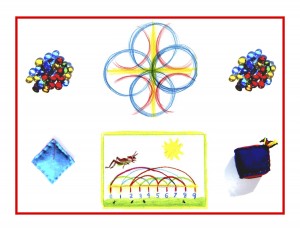Day 39
For one year, 365 days, this blog will address the Common Core Standards from the perspective of creating an alternate, ambient learning environment for math. Ambient is defined as “existing or present on all sides, an all-encompassing atmosphere.” And ambient music is defined as: “Quiet and relaxing with melodies that repeat many times.”
Why ambient? A math teaching style that’s whole and all encompassing, with themes that repeat many times through the years, is most likely to be effective and successful. Today’s post will focus on the Standard for Mathematical Practice #3. It’s paired with yesterday’s (#2) standard as the second of four categories. These two are paired because they both focus on “reasoning and explaining.”
Before blogging tonight, I explored the web for examples of how teachers are applying this particular standard in Kindergarten and Grade 1. My overall impression is that teachers are working hard to match lesson plans with requirements. And that the whole may be suffering at the expense of attending to the parts.
Shouldn’t the standards take a back seat, as a tool for assessment after the teacher has been given free reign to teach the basics as s/he sees fit? Rather, they seem to be very much front end, requiring diligent attention to their many and detailed facets, driving the lesson planning and day to day interaction with the children. The result is not spontaneous, lively or joyful.
After watching these creative teachers’ competent efforts to fit their lesson planning to the standards’ requirements, I experienced a familiar feeling: self-doubt. Am I writing in a vacuum? Am I disillusioned about what should be the backbone of teaching and education? Have I heard too many one-sided opinions, those of parents and teachers who are dismayed and defeated by the Common Core? I can only hope that this self-doubt is a result of my unwarranted fear, and that my voice on this topic is a valuable one.
Today’s post will be relatively brief. The standard will appear in blue in its entirety, omitting obviously advanced elements. All the suggested activities are potentially applicable to this standard so brief, general guidelines will be listed after it.
Standards for Mathematical Practice
3. Construct viable arguments and critique the reasoning of others.
Mathematically proficient students understand and use stated assumptions, definitions, and previously established results in constructing arguments. They make conjectures and build a logical progression of statements to explore the truth of their conjectures. They justify their conclusions, communicate them to others, and respond to the arguments of others. They reason inductively about data, making plausible arguments that take into account the context from which the data arose. Elementary students can construct arguments using concrete referents such as objects, drawings, diagrams, and actions. Such arguments can make sense and be correct, even though they are not generalized or made formal until later grades.
The Kindergarten free play time affords a wealth of opportunity for this sort of reasoning and argument. As the child(ren) engage in play they practice real world experiences. If you observe children (or even a single child) in play, you will see constant reasoning and argument, since they are trying on ways to live in the world that are in large part imitation, but also the innovation that surfaces from their own budding consciousnesses.
It’s just a short leap from this more general play to math. All of the materials that were gently introduced then placed in the math corner for free play will generate this sort of interaction. The teacher can gently intervene at times to observe and prompt. But you will find that all the points covered in this standard are quite native to the young child and will surface of themselves.
Though this is a general review, I trust that you will find your way to apply it in tandem with the suggested activities without too much difficulty. I am prompted to include this excerpt from William Wordsworth’s poem, “Intimations of Immortality” with the fervent hope that we will see (and trust, in faith) these “trailing clouds of glory” in all of our children.
“Our birth is but a sleep and a forgetting:
The soul that rises with us, our life’s Star,
Hath had elsewhere its setting,
And cometh from afar:
Not in entire forgetfulness,
And not in utter nakedness,
But trailing clouds of glory do we come
From God, who is our home:
Heaven lies about us in our infancy!
Shades of the prison-house begin to close
Upon the growing Boy,
But he beholds the light, and whence it flows,
He sees it in his joy . . . ”
Knowledge ensues in an environment dedicated to imaginative, creative knowing, where student and teacher alike surrender to the ensuing of that knowledge as a worthy goal. Tune in tomorrow for the Kindergarten Standard for Mathematical Practice #4.












